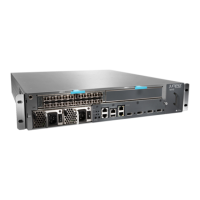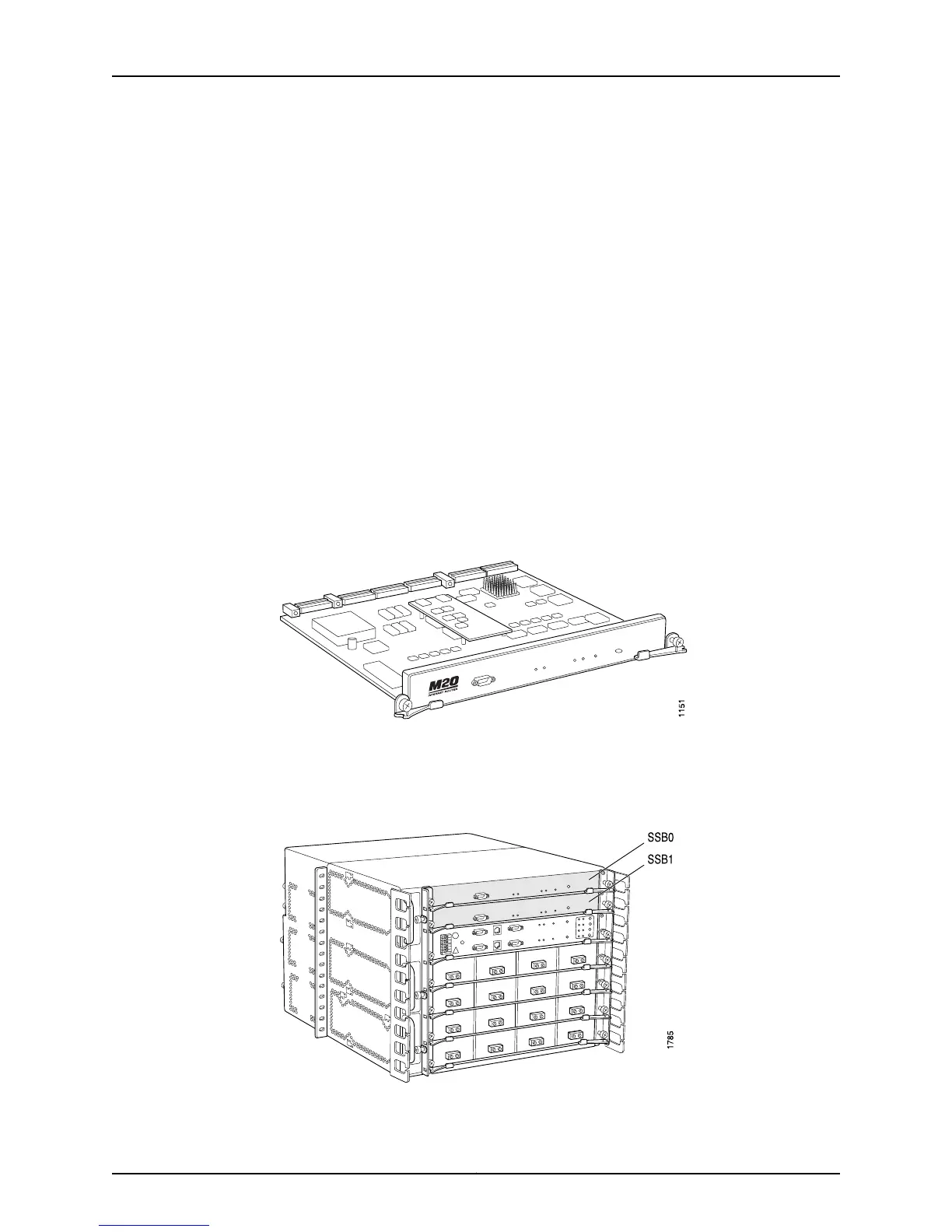lookup, the Internet Processor ASIC informs the midplane of the forwarding decision,
and the midplane forwards the decision to the appropriate outgoing interface.
•
System component monitoring—The SSB monitors other system components for
failure and alarm conditions. It collects statistics from all sensors in the system and
relays them to the Routing Engine, which sets the appropriate alarm. For example, if
a temperature sensor exceeds the first internally defined threshold, the Routing Engine
issues a “high temp” alarm. If the sensor exceeds the second threshold, the Routing
Engine initiates a system shutdown.
•
Exception and control packet transfer—The Internet Processor ASIC passes exception
packets to a microprocessor on the SSB, which processes almost all of them. The
remaining packets are sent to the Routing Engine for further processing. Any errors
originating in the Packet Forwarding Engine and detected by the SSB are sent to the
Routing Engine using system log messages.
•
FPC reset control—The SSB monitors the operation of the FPCs. If it detects errors in
an FPC, the SSB attempts to reset the FPC. After three unsuccessful resets, the SSB
takes the FPC offline and informs the Routing Engine. Other FPCs are unaffected, and
normal system operation continues.
Figure 262: SSB Component
You can install two SSBs in the M20 router. The SSBs occupy the two top slots of the
card cage (SSB0 and SSB1), and are installed into the midplane from the front of the
chassis. (See Figure 263 on page 507.)
Figure 263: M20 Router SSB Location
The SSB houses the Internet Processor ASIC and two Distributed Buffer Manager ASICs.
507Copyright © 2012, Juniper Networks, Inc.
Chapter 23: Monitoring the SSB

